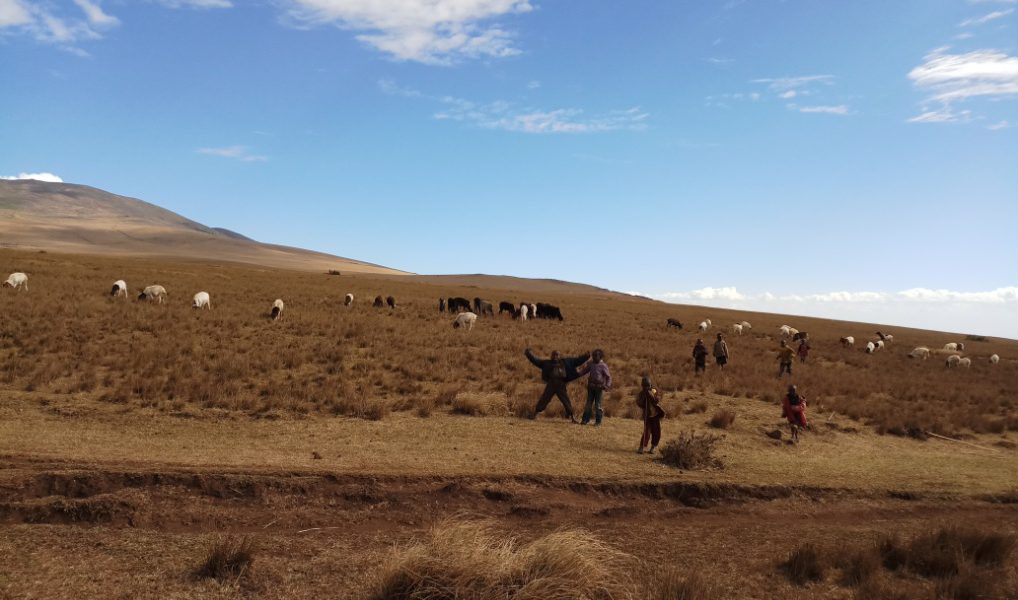Who said human beings are not animals? From classification biology of living things, we learn that human beings belong to animal kingdom. Please wait! This article is not about biology; rather it is about exciting and innovative interaction between human beings, livestock and wildlife in Ngorongoro conservation area (NCA). The interaction goes beyond conventional thinking about conservation of natural resources. This article was inspired by the visit of Sokoine University of Agriculture (SUA) in September 2018 at Ngorongoro Conservation Area Authority (NCAA), which aimed at strengthening collaboration among the two organizations on outreach activities. The university was represented by the Institute of Continuing Education (ICE) and Southern African Centre for Infectious Diseases Surveillance (SACIDS).
 A photo showing maasai children near grazing livestock around 17.00 EAT, Sept. 2018 in Ngorongoro Conservation Area, Tanzania (Consent sought)
A photo showing maasai children near grazing livestock around 17.00 EAT, Sept. 2018 in Ngorongoro Conservation Area, Tanzania (Consent sought)

A photo showing maasai houses in Ngorongoro Conservation Area, Tanzania
Conventionally, ideas and practices about conservation of wildlife have centered on separating wildlife from human beings. Yet, we understand from traditional life (prior the western ideas of fines and fencing), the separation of human beings from wildlife resources was not common. For example, traditional management and uses allowed the interaction of hunters and gatherers with natural resources including wildlife.
 A photo showing wildlife (zebra) and maasai livestock grazing together in Ngorongoro Conservation Area, Tanzania.
A photo showing wildlife (zebra) and maasai livestock grazing together in Ngorongoro Conservation Area, Tanzania.
The Ngorongoro Conservation Areas (NCA) provides an example where external ideas are adapted instead of being adopted as blue prints. Such adaptation respects and embraces multiple interests of local communities including livelihood practices of livestock keepers and conservation at the same time, rather than advocating external perspectives and practices alone, which may not suit social-cultural local context. Combination of multiple uses in NCA is an innovative and middle ground practice that needs sustaining and applied in other similar situations for the benefit of local communities and conservation of wildlife resources.

A photo showing maasai children during break time around 10.00 EAT at a primary school located within the surroundings of NCAA Head Quarters (All photos in this article by Dr. Innocent Babili, September 2018)
By
Dr. Innocent H. Babili, Institute of Continuing Education (ICE) – SUA.
For comments, write to ibabili@sua.ac.tz

